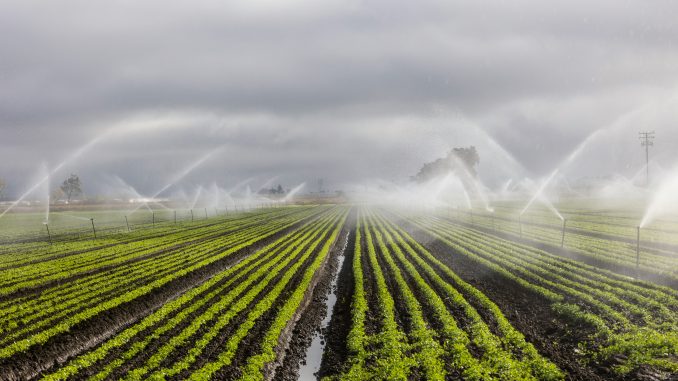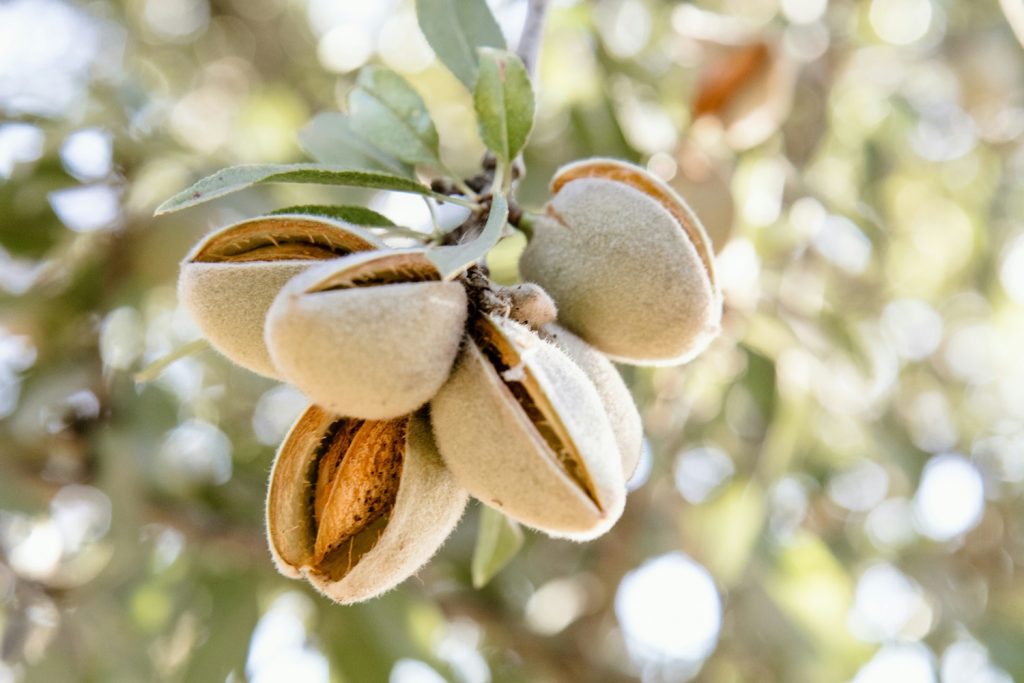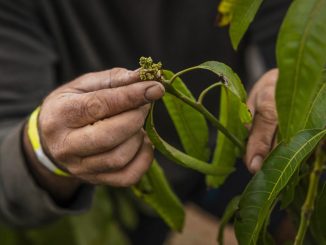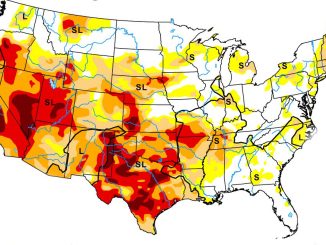
By Rachel Becker (for CalMatters)
This story was produced by CalMatters, an independent public journalism venture covering California state politics and government. For more info, visit calmatters.org.
California farmers could save massive amounts of water if they planted less thirsty—but also less lucrative—crops instead of almonds, alfalfa and other water-guzzling ones, according to new research by scientists who used remote sensing and artificial intelligence.
Such a seismic shift in the nation’s most productive agricultural state could cut consumption by roughly 93 percent, researchers with UC Santa Barbara and the NASA Jet Propulsion Laboratory reported Monday.
But Anna Boser, the study’s lead author, acknowledged that replacing all of California’s water-intensive crops with the least-intensive ones, such as grains and hay, is an unrealistic economic scenario.
“In reality, that is not going to happen,” Boser told CalMatters. “Grain and hay crops aren’t really super economically viable in California, which is why everybody is growing crops that are more water intensive.”
In a less-extreme scenario, the researchers reported that fallowing 5 percent of fields with the most water-intensive crops could cut water consumption by more than 9 percent, according to the study, published in the journal Nature Communications. Another 10 to 11 percent would be saved by increasing water efficiency or by switching half of growers from the thirstiest to more average crops, the researchers reported.
“We potentially don’t need to be as extreme with our changes in order to save water in agriculture as we originally thought,” Boser said.
For instance, in a critically overdrafted basin in Tulare County, that would mean switching from crops such as kiwis, walnuts, almonds, alfalfa and cherries to more average water users, such as corn or sorghum.
The market value of California’s crops and livestock is estimated at $59 billion, led by dairy, grapes, cattle and almonds. The state’s growers feed much of the country, as well as exporting their products internationally.
California is world-famous for its high-value specialty crops, such as pistachios, almonds, walnuts, strawberries, stone fruits and wine and table grapes. Many of these use larger amounts of water but are the least likely to be fallowed by farmers.
“Forage crops and grains are lower water use but can also be grown in many areas of the country, whereas the specialty crops California grows can’t as easily,” said Alexandra Biering, senior policy advocate with the California Farm Bureau. “At the end of the day, as a society, we’ve left it up to farmers to decide what to grow with the resources they have, based on what the market demands.”

Climate change is squeezing water supplies, increasing temperatures and making the state’s swings from dry to wet even more extreme and less predictable. Some farmers are experimenting with new crops that are more resistant to droughts or heat.
At the same time, growers are also reeling from struggling markets. Though California is the country’s top walnut producer, the U.S. Department of Agriculture estimates that 25,000 acres have come out of production amid plummeting tree nut prices. And almonds, often demonized as a water guzzler, saw a drop in total acreage for the past two years.
Now, as state policies are poised to restrict the flow of groundwater from depleted aquifers, up to a million acres of prime farmland may need to come out of production in the San Joaquin Valley, according to The Public Policy Institute of California.
“In areas where groundwater pumping restrictions are in place, like in parts of Tulare County, some growers are already transitioning to lower water use crops like cotton,” Biering said. “To the extent that this study is useful for growers to understand their options under a reduced water supply, that’s great.”
The researchers used a satellite tool to estimate the amounts of water that agriculture used in the Central Valley, then used artificial intelligence to subtract how much water evaporates from various landscapes and soil types in order to isolate how much the crops used.
Boser pulled from the U.S. Geological Survey’s National Water Information System to calculate that Central Valley counties use more than 23 million acre-feet of water a year for irrigation. That’s enough to supply about three-quarters of the U.S. population. About 62 percent of this is consumed by the crops.
Farmers in the southern Central Valley, such as Kern and Kings counties, were the most efficient, doing the most with the least water. Those in the lusher, northern valley and around the Sacramento-San Joaquin Delta were the least efficient; they have more abundant local supplies and they plant crops like rice that aren’t suited to drip irrigation.
Josué Medellín-Azuara, a UC Merced associate professor of civil and environmental engineering, commended Boser’s detailed mapping. “It helps refocus efforts for areas that are struggling to get water, or to work with their water balances,” he said. “It will help identify hotspots for planning on water resources.”
But he said some of the water-tightening scenarios the study evaluated are more feasible than others.
“You start dictating crops, that becomes a little bit of a problem,” he said. “There are reasons why certain crops are grown in California, meaning there’s a demand for them.”
Boser found that the usual suspects topped the list of the most water-intensive crops in California, including almonds and alfalfa as well as dates, kiwis and cotton. Grain and other hay crops, turf farms, wheat and sunflowers were among the thriftiest. Vineyards, pistachios, olives, plums, prunes and apricots were in the middle.
About 85 percent of the industry’s employment and revenues are in fruits, nuts and vegetables, Medellín-Azuara said. Farmers growing these higher value crops are more likely to purchase water from growers of less-valuable crops than to go without themselves.
“These crops have the ability to buy water from the lower value commodities,” he said. “You can make a case for rice, but for trees it’s harder.”
But not all conservation requires changing crops. Boser’s team found the crop type accounted for only about a third of the variation in Central Valley farmers’ water use. Some of the rest was likely driven by farming practices.
Boser’s team, however, wasn’t able to tease out which approaches reduced water use in the study. She suspects that mulching, reducing tillage and leaving crop residues on fields to protect the soil, and using more efficient irrigation strategies may all help prevent water loss to evaporation.




Be the first to comment